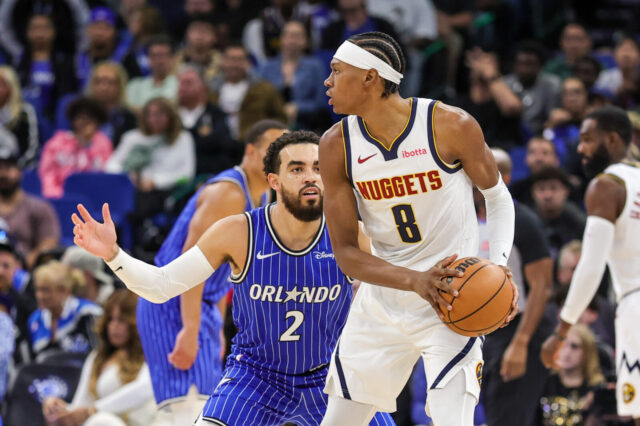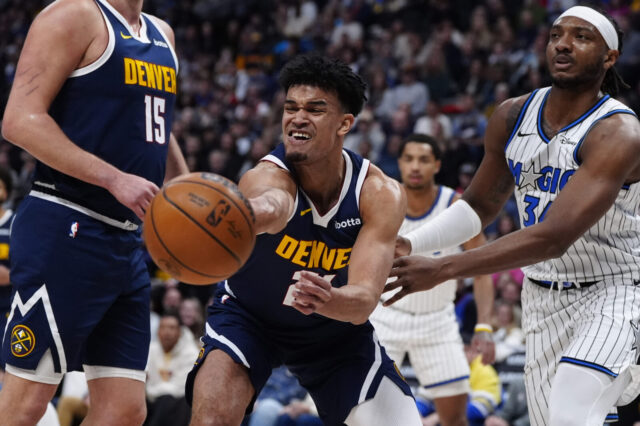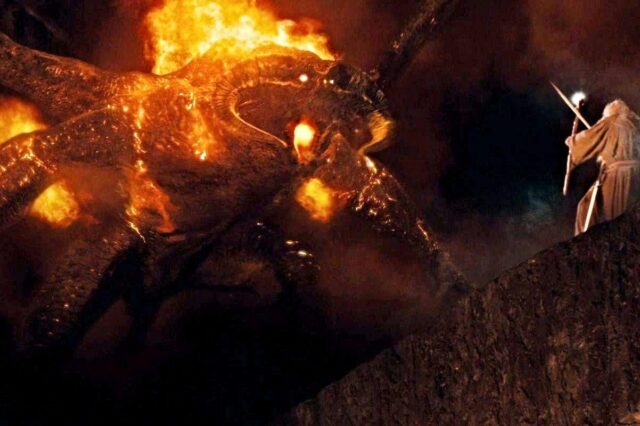And you thought acclimating to the altitude in Denver might be tough.
Less than a week on the job as the Nuggets new vice president of basketball operations, the young-but-highly-thought-of Tim Connelly must make two big decisions: one that will alter the course of Nuggets history almost immediately (for good or bad) and another that could have an impact but is less likely to do so.
The two decisions at hand, of course, are the hiring of a new head coach and drafting 27th overall this Thursday night in the 2013 NBA Draft.
So … welcome to Denver, Tim!
Both decisions vary greatly in terms of importance and impact. The hiring of a head coach will have immediate ramifications on the organization whereas if whomever the Nuggets draft at 27th turns out to be a legitimate NBA player, it's pure gravy. (It should be noted that if Kroenke and Connelly follow the Andrew Feinstein Guide to Drafting Late in the First Round they have a good shot at making the 27th pick work … more on that shortly).
On the coaching front, to date the Nuggets have/will interview three candidates: Lionel Hollins, Brian Shaw and Vinny Del Negro. And with Doc Rivers recently reported as the Los Angeles Clippers next head coach, both Hollins and Shaw will be available for the Nuggets should they want them. Our resident Stiffs Jeff Morton and Colin Neilson are both big on Shaw, and for good reason. Shaw is young enough at 47 years old that he can relate to the modern NBA player, he has a championship pedigree (both as a player and as an assistant coach) and would probably fit in well with the Nuggets young GM in Connelly and even younger owner in Josh Kroenke. I remain concerned about Shaw being another Phil Jackson disciple (given that the others have been disasters as head coaches), but Jeffrey has been convincing me not be to recently.
Hollins, on the other hand, would certainly bring more gravitas and "seasoning" to the table and, as I've written previously, I can personally vouch for Hollins as a serious, old school, introspective, stand up guy. But the old school part of Hollins' resume might be an issue with the Nuggets young management regime. As one NBA executive recently told me: "Good luck telling Lionel 'no' when he wants to do something that's different from what ownership / management want to do."
Del Negro, an unforeseen wild card that was recently injected into the Nuggets head coaching conversation, has probably been unfairly excoriated during previous stops in Chicago (where he guided a very young Bulls team to two straight playoff appearances … including a thrilling seven-game series against Boston in 2009) and Los Angeles (where he became just the fourth coach in the Clippers’ Los Angeles history to guide the team to the post-season and the only one to do so two years in a row and advance the team to Round 2). But fair or not, when the news of Del Negro’s interview broke Nuggets fans went into a collective panic that would be tough for the organization to overcome from a public relations standpoint.
Regardless of who the first head coach of the Kroenke / Connelly administration is, he’s got a lot to live up to. Sure, George Karl was incapable of getting the Nuggets beyond the playoffs’ first round more than once in eight-and-a-half years … but Karl delivered regular season wins. And lots of them. The only way a new head coach can top a record-breaking 57-win season is to get the Nuggets into Round 2 in Year One of his coaching tenure. A tall order that became the new benchmark of expectation the day Kroenke fired Karl.
Conversely, if the selection made during Thursday's NBA Draft has minimal or no impact on the team this season little will be thought of it. Rarely, if ever, do late first round draft picks come with high expectations and nor should they. That being said, value can be found at the tail end of the NBA Draft if you follow the Four Rules for good late round drafting as outlined in my 2008 (I've been writing that long?!) column on the subject.
Here are those rules again, with updates given that it has been five years since I first wrote them:
Rule #1: Stay away from centers in the back of the draft. By my accounting, in 20 years only four decent centers have been drafted in the first round from the 20th pick onward: Vlade Divac in 1989, Elden Campbell in 1990, the Big Z in 1996 and Brendan Haywood in 2001. In fact, an entire landfill could be filled up with the corpses of bust centers like Anthony Cook, Duane Causwell, “Eddie” cast member Dwayne “My Name is Ivan!” Schintzius, Alaa Abdelnaby, Stanley Roberts, Elmore Spencer, Geert Hammink, George Zidek, Loren Meyer, Priest Lauderdale, Travis Knight, Leon Smith, Jake Tsakalidis, Mamadou N’Diaye, Pavel Podkolzin and David Harrison (and I’m sure I missed a few).
UPDATE: Since writing my rules in 2008, just three centers drafted after 20 have actually panned out: Kosta Koufos (23rd overall, 2008), DeAndre Jordan (35th overall, 2008) and Omer Asik (36th overall, 2008). Given that low probability of success, I’d still avoid a center this late in the first round.
Rule #2: Don’t get seduced by the “best athlete available” argument. Most teams drafting late in the first round – like the Nuggets in 2005 – made the playoffs, so they go into the draft willing to gamble on “raw talent” with “big upside” (anyone who has watched the draft should be familiar with Jay Bilas’ buzz words by now). But history tells us this is a flawed strategy, and the Nuggets themselves have paid the price for drafting this way (see Brooks, Kevin and Hodge, Julius). Consider the case of Hodge specifically. Had the Nuggets drafted for what they really needed – a backup “big man” for the oft-injured Kenyon Martin, Nene Hilario and Marcus Camby – Jason Maxiell or David Lee might be Nuggets right now.
UPDATE: I still stand by this one and the Nuggets’ own Jordan Hamilton might prove to be another example of why “best athlete available” is a flawed strategy late in the first round. Save this strategy for the second round when the likes of Quincy Miller are still available to be drafted.
Rule #3: When in doubt, draft a power forward who played at least three years in college or somewhere overseas. There have been a slew of good-to-great power forwards over the years who have been neglected in the earlier part of the draft. I did some research going back to 1988 and came up with this list of NBA-ready (due to them staying in college or playing professionally overseas) power forwards who were selected late in the first round (or even in the second round) during that 20 year span: Clifford Robinson (36th pick overall), Jayson Williams (21st), Antonio Davis (45th), P.J. Brown (29th), Kenny Thomas (22nd), Nenad Krstic (24th), Carlos Boozer (34th), Luis Scola (55th), Anderson Varejao (30th), Jason Maxiell (26th), David Lee (30th), Ronny Turiaf (37th), Paul Millsap (47th), Leon Powe (49th), Carl Landry (31st) and even “Big Baby” Glen Davis (35th).
UPDATE: Look no further than Kenneth Faried (22nd overall, 2011) as additional proof that the power forward theory is virtually guaranteed to work. Need more examples since 2008? How about Ryan Anderson (21st overall, 2008), Serge Ibaka (24th overall, 2008), Darrell Arthur (27th overall, 2008), Nikola Pekovic (31st overall, 2008), Byron Mullens (24th overall, 2009), Taj Gibson (26th overall, 2009), DeJuan Blair (37th overall, 2009), Jared Sullinger (21st overall, 2012) and Festus Ezeli (30th overall, 2012) to name a few. I can’t be more adamant about this: DRAFT A POWER FORWARD WHO PLAYED AT LEAST THREE YEARS IN COLLEGE!!!!
Rule #4: Put a premium on character and work ethic. At the end of the day, a terrific college player with a tireless work ethic and solid character will figure out a way to be a productive NBA player, even if he’s deemed “undersized” for his position by the draft pundits. Most of the power forwards listed above would fit this description, as do other late round or second round steals. Notable names on this list include Brian Shaw, Rick Fox, the late Bobby Phills, Sam Cassell, Bryon Russell, Michael Finley, Eric Snow, Derek Fisher, James Posey, Eddie House, Michael Redd, Gerald Wallace, Gilbert Arenas, Earl Watson, Tayshaun Prince, John Salmons, Josh Howard, Jason Kapono, Luke Walton, Steve Blake, Kyle Korver, Jameer Nelson, Linas Kleiza and Jordan Farmar.
UPDATE: Another rule that I stand by to this day. But I want to add the wrinkle of a foreign player who has that tireless work ethic and the equally solid character seen in the college players mentioned above. Examples of foreigners who fit the bill since 2008 include Ibaka (24th overall, 2008), Nicolas Batum (25th overall, 2008), Pekovic (31st overall, 2008), Asik (36th overall, 2008), Luc Mbah a Moute (37th overall, 2008), Goran Dragic (45th overall, 2008), Omri Casspi (23rd overall, 2009), Greivis Vasquez (28th overall, 2010) and the Nuggets’ Evan Fournier (20th overall, 2012).
It's going to undoubtedly be a busy week in Nuggets Nation. Ideally, Kroenke and Connelly hire a coach sooner than later who can join them in the war room on Thursday night. But given that the coaching decision is such a monumental one and given that the 27th pick in the NBA Draft comes with such a low probability of success, the Nuggets needn't rush the coaching decision just for Thursday's draft.


